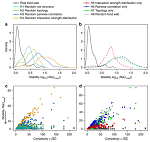Ecology and evolution
Developmental nonlinearity drives phenotypic robustness
Rebecca M. Green et al., Nat. Commun. 8 1970 (2017)
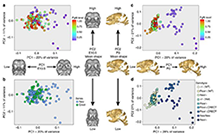 Developmental processes often involve nonlinearities, but the consequences for translating genotype to phenotype are not well characterized. Here, Green et al. vary Fgf8 signalling across allelic series of mice and show that phenotypic robustness in craniofacial shape is explained by a nonlinear effect of Fgf8 expression.
Developmental processes often involve nonlinearities, but the consequences for translating genotype to phenotype are not well characterized. Here, Green et al. vary Fgf8 signalling across allelic series of mice and show that phenotypic robustness in craniofacial shape is explained by a nonlinear effect of Fgf8 expression.
Predicting metabolic adaptation from networks of mutational paths
Christos Josephides and Peter S. Swain, Nat. Commun. 8 685 (2017)
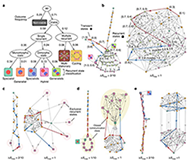 The structure and dynamics of microbial communities reflect trade-offs in the ability to use different resources. Here, Josephides and Swain incorporate metabolic trade-offs into an eco-evolutionary model to predict networks of mutational paths and the evolutionary outcomes for microbial communities.
The structure and dynamics of microbial communities reflect trade-offs in the ability to use different resources. Here, Josephides and Swain incorporate metabolic trade-offs into an eco-evolutionary model to predict networks of mutational paths and the evolutionary outcomes for microbial communities.
Multilayer networks reveal the spatial structure of seed-dispersal interactions across the Great Rift landscapes
Sérgio Timóteo et al., Nat. Commun. 9 140 (2018)
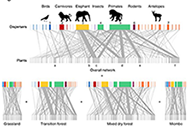 Species interaction networks have been usually delimited by perceived habitat borders. Here, seed-dispersal is analysed as a regional multilayer network of interconnected habitats, highlighting the key role of versatile dispersers for the functional cohesion of the whole Gorongosa landscape.
Species interaction networks have been usually delimited by perceived habitat borders. Here, seed-dispersal is analysed as a regional multilayer network of interconnected habitats, highlighting the key role of versatile dispersers for the functional cohesion of the whole Gorongosa landscape.
Microbial community-level regulation explains soil carbon responses to long-term litter manipulations
Katerina Georgiou et al., Nat. Commun. 8 1223 (2017)
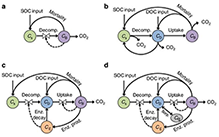 Microbial models of soil organic carbon feed into Earth System Models, but many exhibit unrealistic oscillatory behaviour. Here, the authors propose a density-dependent formulation of microbial turnover that improves microbial models, with large implications for global carbon-concentration feedbacks.
Microbial models of soil organic carbon feed into Earth System Models, but many exhibit unrealistic oscillatory behaviour. Here, the authors propose a density-dependent formulation of microbial turnover that improves microbial models, with large implications for global carbon-concentration feedbacks.
Networks of genetic similarity reveal non-neutral processes shape strain structure in Plasmodium faciparum
Qixin He et al., Nat. Commun. 9 1817 (2018)
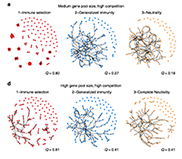 Plasmodium has evolved high genetic diversity in var genes, which encode for the major blood-stage antigen. Here, the authors show how immune selection shapes the var gene repertoire in both simulated systems and a population in Ghana, by using neutral models and genetic similarity networks.
Plasmodium has evolved high genetic diversity in var genes, which encode for the major blood-stage antigen. Here, the authors show how immune selection shapes the var gene repertoire in both simulated systems and a population in Ghana, by using neutral models and genetic similarity networks.
Metric clusters in evolutionary games on sclale-free networks
Kaj-Kolja Kleineberg, Nat. Commun. 8 1888 (2017)
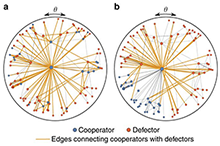 Heterogeneous complex networks tend to be a more realistic representation of social networks than homogenous ones. Here Kleineberg investigates the role of network heterogeneity in the emergence of cooperation in social dilemmas and shows that it can sometimes hinder it.
Heterogeneous complex networks tend to be a more realistic representation of social networks than homogenous ones. Here Kleineberg investigates the role of network heterogeneity in the emergence of cooperation in social dilemmas and shows that it can sometimes hinder it.
Disentangling the the role of floral sensory stimuli in pollination networks
Aphrodite Kantsa et al., Nat. Commun. 9 1041 (2018)
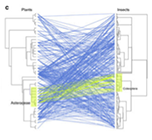 Can floral phenotype predict the most influential species for maintaining plant–pollinator communities? Here, Kantsa et al. develop a methodology for trait-based analysis, revealing the critical role of floral scent, and floral colour as perceived by insects, in shaping visitation networks.
Can floral phenotype predict the most influential species for maintaining plant–pollinator communities? Here, Kantsa et al. develop a methodology for trait-based analysis, revealing the critical role of floral scent, and floral colour as perceived by insects, in shaping visitation networks.
Predicting the effect of habitat modification on networks of interacting species
Phillip P. A. Staniczenko et al., Nat. Commun. 8 792 (2017)
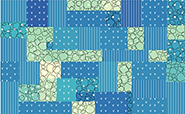 In a changing world, the ability to predict the impact of environmental change on ecological communities is essential. Here, the authors show that by separating species abundances from interaction preferences, they can predict the effects of habitat modification on the structure of weighted species interaction networks, even with limited data.
In a changing world, the ability to predict the impact of environmental change on ecological communities is essential. Here, the authors show that by separating species abundances from interaction preferences, they can predict the effects of habitat modification on the structure of weighted species interaction networks, even with limited data.
The fin to limb transition as the reo-organisation of a Turing pattern
Koh Ominaru et al. Nat. Commun. 7 11582 (2016)
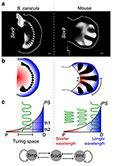 Alan Turing suggested that morphological development could be regulated by a self-organizing, reaction-diffusion mechanism. Indeed, mouse digit patterning has been found to be controlled by a Turing network of Bmp, Sox9, and Wnt. Here, Onimaru and colleagues show that fin patterning in the catshark, Scyliorhinus canicula, is controlled by the same network with a different spatial organization. Thus, they demonstrate that the Turing network is deeply conserved in limb development.
Alan Turing suggested that morphological development could be regulated by a self-organizing, reaction-diffusion mechanism. Indeed, mouse digit patterning has been found to be controlled by a Turing network of Bmp, Sox9, and Wnt. Here, Onimaru and colleagues show that fin patterning in the catshark, Scyliorhinus canicula, is controlled by the same network with a different spatial organization. Thus, they demonstrate that the Turing network is deeply conserved in limb development.
Predicting the stability of large structured food webs
Stefano Allesina et al., Nat. Commun. 6 7842 (2015)
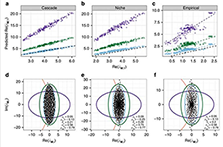 Random matrix theory has been central to the study of the relationship between complexity and stability in ecological networks. However, incorporating variable ecological interaction strengths and other dimensions of ecological complexity into these models has been a key limitation. Here, Allesina and colleagues use the ‘cascade model’, which does not assume a random graph, to develop model food web networks and analytically approximate the stability under various conditions. They find that network stability is determined by variability in interaction strengths, rather than the mean.
Random matrix theory has been central to the study of the relationship between complexity and stability in ecological networks. However, incorporating variable ecological interaction strengths and other dimensions of ecological complexity into these models has been a key limitation. Here, Allesina and colleagues use the ‘cascade model’, which does not assume a random graph, to develop model food web networks and analytically approximate the stability under various conditions. They find that network stability is determined by variability in interaction strengths, rather than the mean.
Social inheritance can explain the structure of animal social networks
Amiyaal Ilany and Erol Akçay, Nat. Commun. 7 12084 (2016)

Environmental change makes robust ecological networks fragile
Giovanni Strona and Kevin D. Lafferty, Nat. Commun. 7 12462 (2016)

Ecological networks are more sensitive to plant than to animal extinction under climate change
Matthias Schleuning et al., Nat. Commun. 7 13965 (2016)
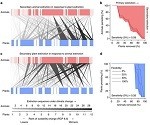
No complexity–stability relationship in empirical ecosystems
Claire Jacquet et al., Nat. Commun. 7 12573 (2016)
